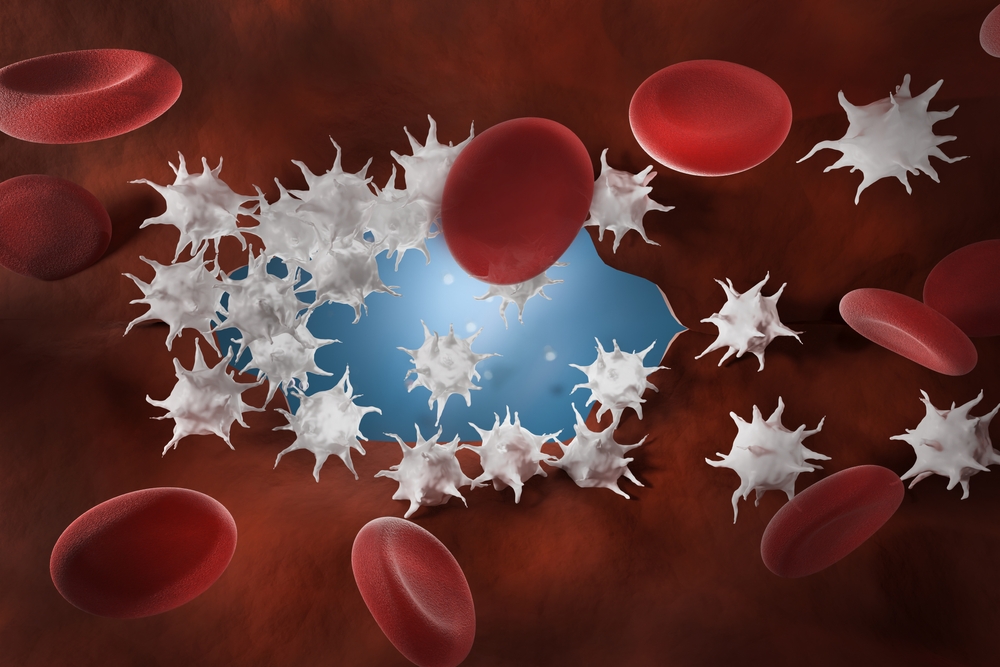
Summary
How blood clotting works
Clotting is a normal part of healing. When you have an injury and it starts to bleed, your body triggers a sequence of chemical reactions to create a blood clot and stop the bleeding. This is the coagulation cascade.
Substances called clotting factors are activated one after the other, then threads of a protein called fibrin are produced.
The fibrin threads are glued together to form a fibrin net that catches platelets and helps hold them together to form the clot.
Once a clot is formed, other substances are activated to slow the clotting process. They eventually begin to dissolve the clot so that the clot is removed when the injury is healed.
There must be a sufficient amount of each clotting factor, and each must function properly, in order for normal clotting to occur.
One of these clotting factors is prothrombin. It helps your blood to stay at the right consistency. One of the steps in the clotting cascade is the conversion of prothrombin to thrombin. The PT test measures the time it takes for prothrombin to convert to thrombin.
Platelets are tiny plate-shaped cells that circulate in your blood. They bind together to form clots. They transform in shape and become very sticky to begin the formation of a blood clot.
Why get tested?
The prothrombin time test measures the number of seconds it takes for a clot to form in your sample of blood. The INR is a calculation based on the results of the prothrombin time test.
If you are regularly taking warfarin, or a similar anti-clotting medication you may need this test to make sure you are taking the right dose. Your doctor will check your INR/PT regularly to make sure that your dose is working well.
Having the right dosage of anti-clotting medication is important. It needs to achieve just the right balance – too much and there is a risk of internal bleeding, too little and there is more chance of your blood clotting. There is no set frequency for doing the test. Your doctor will order it often enough to make sure that your dosage is correct. This is called your target INR range.
The test is also used to diagnose bleeding and blood clotting disorders. Clotting that takes a long time to occur may indicate liver disease. Many clotting factors are made in the liver including prothrombin. If you have liver disease, the INR/PT can help show how severe it is. The test is also used to check for vitamin K deficiency as this is needed for clotting. You may need an INR/PT test if you are scheduled to have surgery to make sure your blood is clotting properly.
Having the test
Sample
Blood.
Any preparation?
Some common medications can interfere with the prothrombin time PT test and give a misleading result. Antibiotics, aspirin and cimetidine can increase prothrombin time. Barbiturates, oral contraceptives and hormone-replacement therapy (HRT), and vitamin K - either in a multivitamin or liquid nutrition supplement - can decrease prothrombin time. Drinking alcohol can also affect prothrombin time results as can foods that contain high levels of vitamin K. Make sure that your doctor knows all the medications you are taking so that the prothrombin time results are interpreted correctly.
Your results
Reading your test report
Your results will be presented along with any other tests your doctor ordered on the same form. You will see separate columns or lines for each of these tests.
What your results mean
Most people on warfarin medication have a target INR range of 2.0 to 3.0. This is a prothrombin time two to three times as long as that of a healthy person, using standardised conditions.
For some people who have a higher risk of clotting, the INR needs to be higher – up to 3.0 to 4.0. Your doctor will use the INR to adjust the dose of your medication to get the prothrombin time into the target range that is right for you.
The chemicals and instruments used to perform the prothrombin time test vary from one laboratory to another and give different results. To standardise results, in 1984 the World Health Organisation (WHO) developed the Internationalised Normalised Ratio (INR), a calculation based on the results of the PT test, to help work out the dosage for people on warfarin medication.
Questions to ask your doctor
The choice of tests your doctor makes will be based on your medical history and symptoms. It is important that you tell them everything you think might help.
You play a central role in making sure your test results are accurate. Do everything you can to make sure the information you provide is correct and follow instructions closely.
Talk to your doctor about any medications you are taking. Find out if you need to fast or stop any particular foods or supplements, as these may affect your results. Ask:
More information
Pathology and diagnostic imaging reports can be added to your My Health Record.
You and your healthcare provider can now access your results whenever and wherever needed.Get further trustworthy health information and advice from healthdirect.
What is Pathology Tests Explained?
Pathology Tests Explained (PTEx) is a not-for profit group managed by a consortium of Australasian medical and scientific organisations.
With up-to-date, evidence-based information about pathology tests it is a leading trusted source for consumers.
Information is prepared and reviewed by practising pathologists and scientists and is entirely free of any commercial influence.